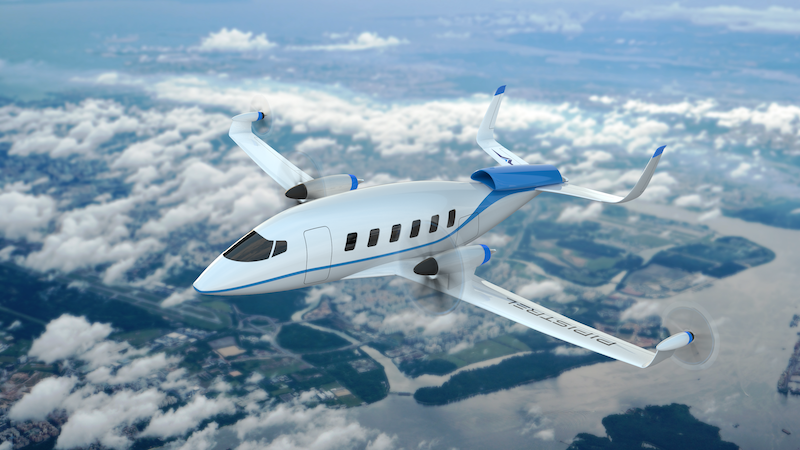Click Here to View This Page on Production Frontend
Click Here to Export Node Content
Click Here to View Printer-Friendly Version (Raw Backend)
Note: front-end display has links to styled print versions.
Content Node ID: 407534
Textron’s plans for the advanced air mobility sector became a lot clearer with last month’s acquisition of European electric aviation pioneer Pipistrel. Now the U.S. group is preparing to expand its portfolio to include ground-breaking products such as the hybrid-electric Panthera light aircraft, the Nuuva family of cargo drones, and, possibly, an eVTOL air taxi vehicle.
“Our top priority is to bring the Panthera to type certification and the Nuuva is probably number two on our list,” Pipistrel’s new president and managing director Gabe Massey told AIN.
The Slovenia-based company, founded by Ivo Boscarol 33 years ago, is now one of two units in Textron’s eAviation division. The other unit is called Nexus, the inherited name from Textron subsidiary Bell’s planned, but since abandoned, eVTOL program.
Massey said that an eVTOL aircraft could yet be part of the mix for Textron, with the expectation that the new group would tap Bell's expertise in vertical takeoff technology. Pipistrel has previously worked on an eVTOL design, and, like Bell, was once one of several prospective partners in the Uber Elevate program to advance urban air mobility services. This approach fell apart when Uber sold Elevate to rival eVTOL developer Joby Aviation in January 2021.
“We’ve always talked about taking a measured approach to urban air mobility, and Textron definitely needs to be there,” said Massey. In his view, Textron brings valuable experience in certifying new aircraft to this challenge, based on its Cessna and Beechcraft families of business aviation products.
Pipistrel itself is no novice when it comes to bringing new aircraft to market. In June 2020, the company achieved the world’s first type certification of an electric aircraft when EASA approved its Velis Electro. Textron believes the two-seat trainer could have a big impact on the U.S. market.
“There is still some regulatory work to be done [with the FAA] but this is very much a priority too,” Massey explained. “And there is no better way to do this than with something that is already flying with proven reliability and with an EASA type certificate.”
But Pipistrel’s innovation ambitions don’t stop there. The company has also been working on a 19-passenger regional airliner called the Miniliner. It is intended to operate on routes of around 300 nm, connecting small airports with little or no scheduled airline services to bigger international gateways.

Visitors to the EBACE show can see the four-seat Panthera hydrogen-powered technology demonstrator for themselves at EBACE this week. The program is backed by the European Union’s Modular Approach to Hybrid Electric Propulsion Architecture project.
Meanwhile, start-ups like MagniX and Ampaire are advancing plans to convert the ubiquitous Cessna Grand Caravan turboprop workhorse to hybrid-electric propulsion. This begs the question as to why Textron’s new eAviation division wouldn’t take on this challenge itself.
“We haven’t answered this for ourselves yet, but this is exactly the type of question that the acquisition [of Pipistrel] will drive us towards,” said Massey. “Pipistrel has built the Panthera and this will be a product for us in the future; we could take that knowledge and apply it to another turboprop.”
Massey praised Pipistrel’s approach of “bringing innovation to market in a measured way." He said that with the Velis Electro, “it didn’t decide to put batteries in a brand new airplane, it elected to take a new battery system and put it in a proven certified product, and that’s the same approach they’ve taken with the Panthera.”

While to observers the somewhat maverick, hyperactive Pipistrel might not seem like a natural fit with the more buttoned-up corporate American giant that is Textron (Booth U17, Static AD_6), the newly merged companies may be more aligned in their thinking than might appear to be the case at face value.